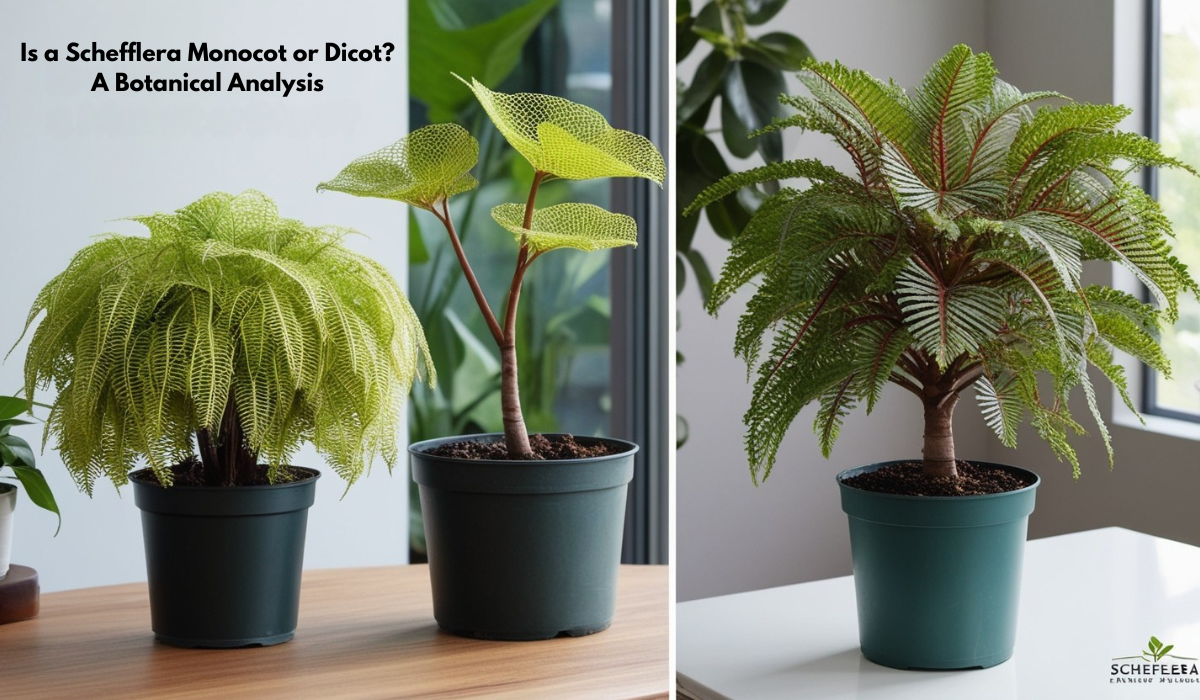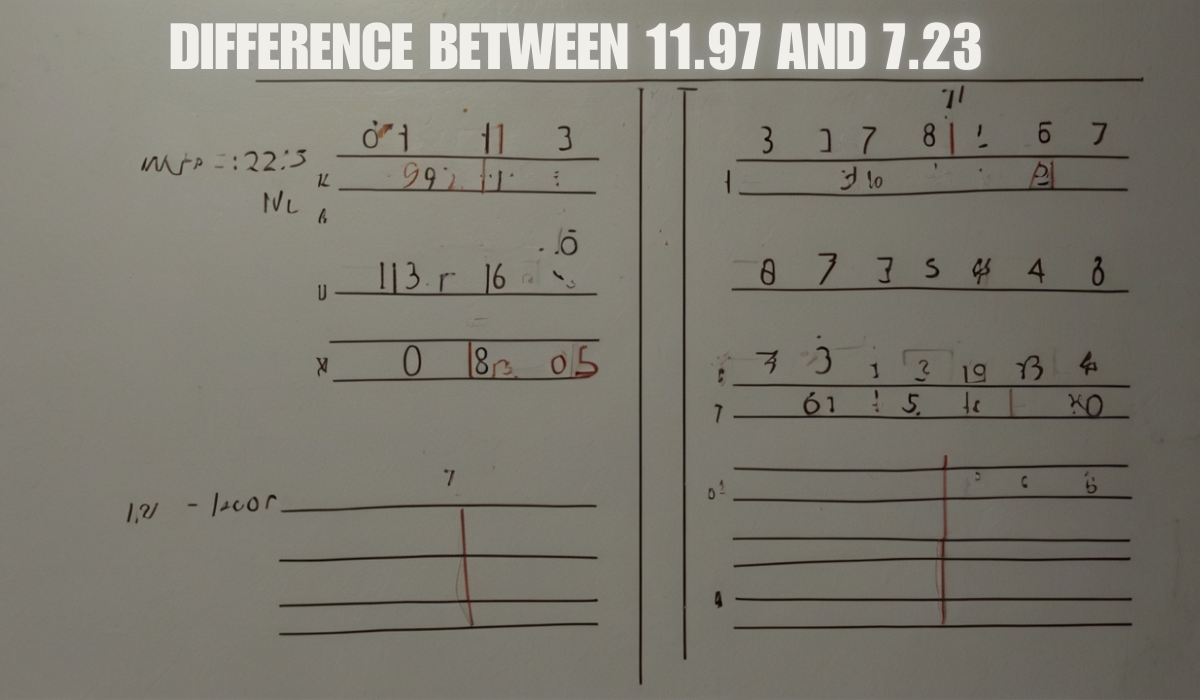Is a Schefflera Monocot or Dicot? A Botanical Analysis
Introduction
The Schefflera plant often called the umbrella or octopus tree, has intrigued many plant enthusiasts and gardeners. A common question arises: “Is a Schefflera monocot or dicot?” This classification is essential for understanding a plant’s structure, growth habits, and care requirements.
This blog will explore the Schefflera plant in detail and its traits and role as a dicot. By the end of this article, you will have a clear answer to the question and gain practical knowledge to care for this fascinating plant.
What Is Schefflera?
Schefflera is a genus of tropical and subtropical plants from the Araliaceae family. With between 600 and 900 species, Schefflera can be found in regions such as China, Taiwan, Vietnam, and other tropical climates worldwide. These plants are popular for their lush, shiny, palmate-shaped leaves, which radiate out like umbrella ribs. They provide an elegant yet natural aesthetic that makes them a favorite for both interior design and outdoor gardening.
Notable characteristics of Schefflera include:
- Leaves: Palmate (umbrella-like) formation with 7 to 16 leaflets.
- Growth Habit: Schefflera stems are semi-woody and adapt well to indoor and outdoor environments.
- Light Needs: Thrives under light and partial shade but adapts to lower light conditions.
- Tolerance: Though not highly sensitive to cold, temperatures below 45°F can cause stress to the plant.
Schefflera is easy to maintain and rewarding for anyone looking to add a touch of greenery to their home, especially with proper care and understanding of its characteristics.
Monocots vs. Dicots
To answer whether Schefflera is a monocot or dicot, it’s vital first to distinguish between the two categories of flowering plants. These classifications, monocots (monocotyledons) and dicots (dicotyledons) are based on the structure of the seed and specific growth traits.
Key Differences Between Monocots and Dicots:
1. Seed Structure
- Monocots have one seed leaf (cotyledon).
- Dicots have two seed leaves.
2. Leaf Veins
- Monocots have parallel leaf venation.
- Dicots have a net-like, or reticulated, vein pattern.
3. Roots
- Monocots have fibrous root systems.
- Dicots often develop a central taproot with branching secondary roots.
4. Floral Structure
- Monocot flowers usually have parts in multiples of three.
- Dicots feature flower parts in multiples of four or five.
5. Stem Vascular Arrangement
- Monocot stems have a scattered vascular bundle structure.
- Dicot stems show a ring-like vascular arrangement.
By analyzing these characteristics, we can assess where Schefflera fits and answer the pressing question of its classification.
Why Schefflera Is a Dicot
Schefflera plants strongly align with the key features of dicots. Below are the core characteristics that confirm its classification:
1. Leaf Veins
Schefflera leaves display a net-like vein structure, confirming one of the primary traits of dicots. This distinct venation supports nutrient flow throughout the plant and enhances photosynthesis efficiency.
2. Stem Structure
Schefflera stems are semi-woody and exhibit a ring-like vascular bundle organization, a signature feature of dicots. This structure strengthens the plant, enabling its adaptability across varied environments.
3. Root Systems
Schefflera plants grow with a dominant taproot system, from which smaller secondary roots branch out. This structure anchors the plant firmly and supports healthy nutrient absorption.
4. Floral Arrangement
Flowers in Schefflera species align with dicot traits, often forming cymose inflorescences that exhibit clear division into multiples of four or five.
Benefits of Knowing Schefflera Is a Dicot
Understanding Schefflera’s classification as a dicot yields practical benefits, especially for gardening enthusiasts.
- Improved Care
Recognizing the Schefflera as a dicot helps guide decisions regarding its watering, fertilizing, and pruning needs. For example, the plant’s root structure suggests the importance of consistent watering without over-saturating the soil.
- Growth Optimization
Schefflera thrives in nutrient-rich, well-draining soil that supports its taproot system. Identifying it as a dicot ensures that you know its requirements for healthy soil composition.
- Environmental Adaptability
Schefflera’s semi-woody dicot stems allow the plant to adjust well to varied conditions, provided temperatures stay above 45°F. Use this understanding to find the perfect placement indoors or in your garden.
Tips for Growing and Caring for Schefflera
To ensure your Schefflera thrives, keep these tips in mind:
Light Levels:
- Scheffleras prefer bright, indirect sunlight. Too much direct sunlight can scorch their leaves.
Watering:
- Allow the top layer of soil to dry out between waterings. Overwatering can lead to root rot.
Temperature:
- Maintain temperatures between 60°F and 80°F.
Pruning:
- Remove damaged or diseased leaves regularly to promote healthy growth.
Fertilizing:
- Utilize a fair fluid compost consistently during the developing season (spring and summer).
Schefflera’s Role in Indoor Air Quality
Beyond its classification, Schefflera brings practical benefits to indoor spaces. Not only does it thrive in modern interiors, but studies have shown its ability to reduce air pollutants such as formaldehyde and benzene compounds frequently found in cigarette smoke and household products.
This dual role as a decorative plant and an air purifier makes Schefflera even more appealing to homeowners and gardening enthusiasts.
FAQs
Q1. What happens if Schefflera is exposed to cold temperatures?
If the plant is stored below 45°F, leaf loss and stress may occur. Aim to keep Schefflera in environments above this temperature threshold.
Q2. How much light does Schefflera need?
Schefflera thrives under moderate light but can adapt to lower light levels, making it a versatile choice for varying indoor environments.
Q3. Can I propagate Schefflera?
Yes! Propagation is possible through stem cuttings, typically taken during active growth periods in spring or summer.
Q4. Why are my Schefflera’s leaves yellowing?
Overwatering, low humidity, or inadequate light are common culprits. Adjust care practices as needed to ensure the soil is well-draining and the plant receives proper light.
Q5. What pests affect Schefflera plants?
Spider mites and scale insects are common pests. Inspect your plant regularly and treat infestations with insecticidal soap or neem oil as needed.
Nurturing Your Schefflera
Is a Schefflera monocot or dicot? Now we know the definitive answer: Schefflera is a dicot, and this classification provides insight into its unique characteristics and care requirements. With this knowledge, you can better support your plant’s health and growth, whether adorning your interior as a houseplant or gracing your garden outdoors.
Schefflera is more than just a plant; it’s a botanic marvel that thrives when treated right. Elevate your houseplant collection by celebrating the endlessly fascinating Schefflera dicot.




Post Comment